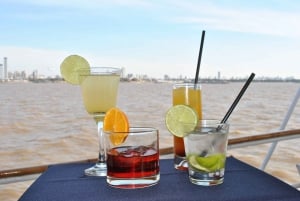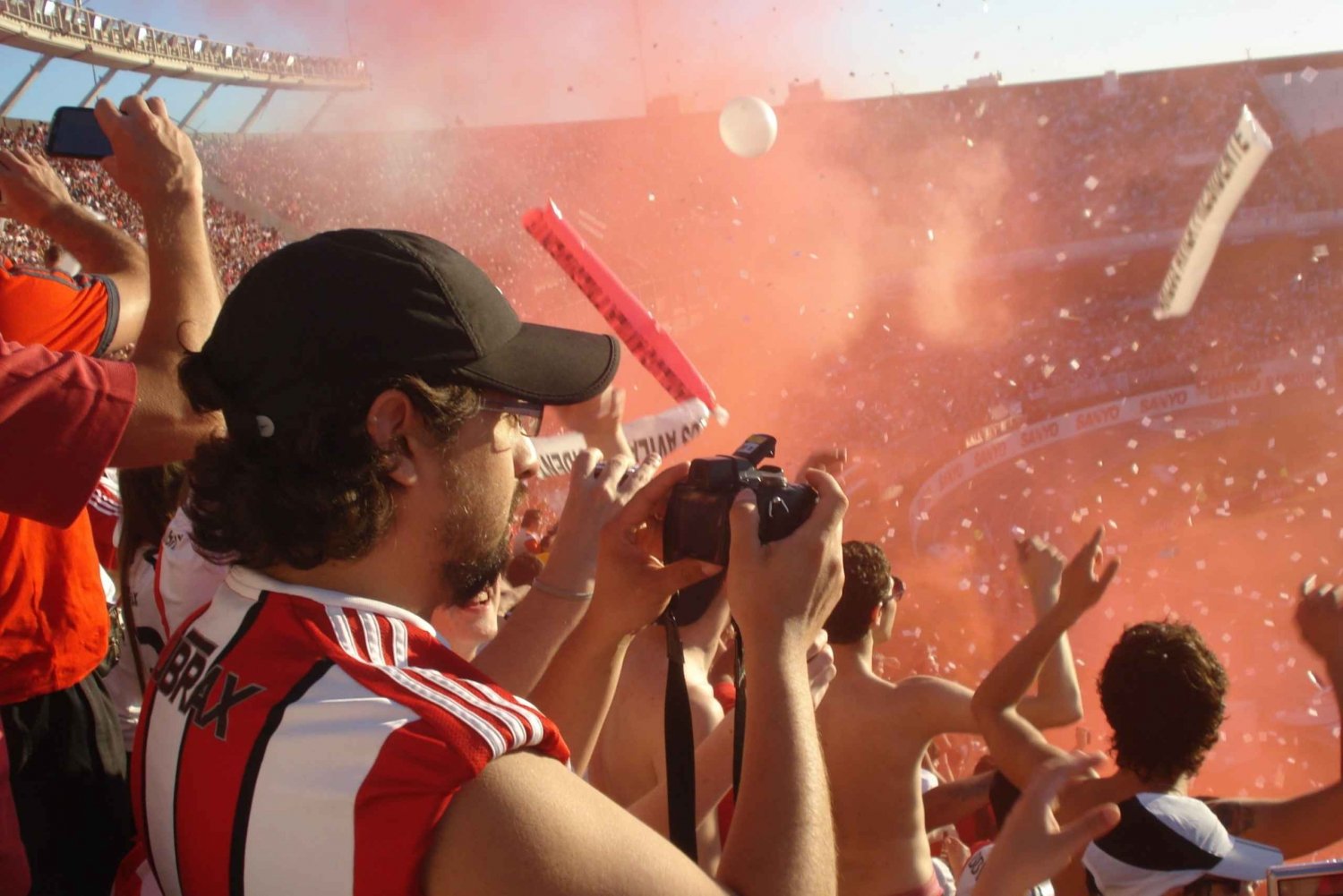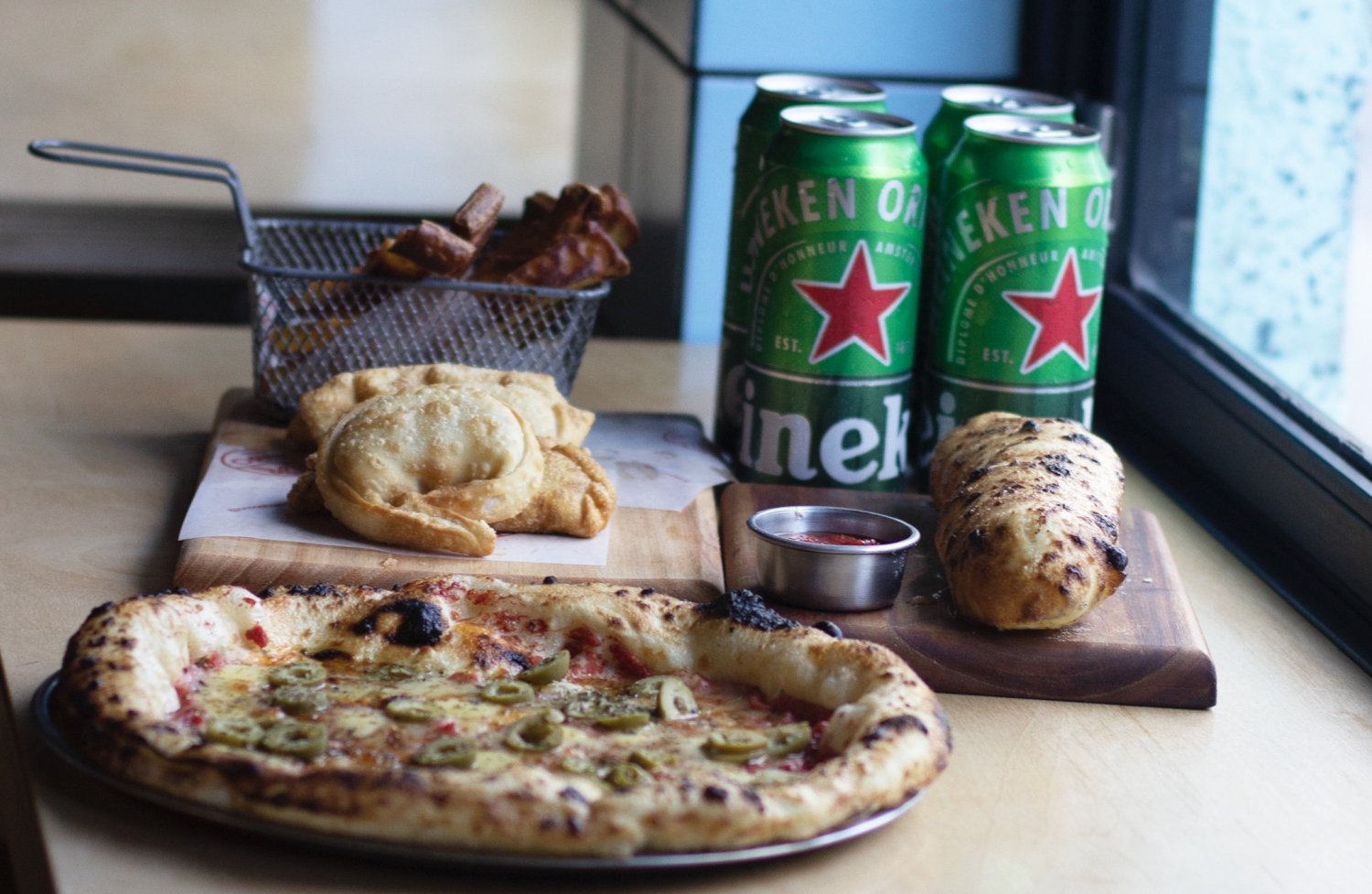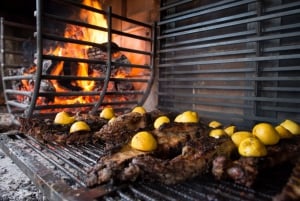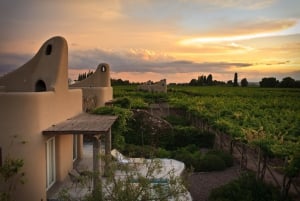Local Recommendations from our My Guide Argentina team
Explore the World like locals
My Guide to Argentina
What's On in Argentina
-
FEATURED

Mendoza: Half-Day Wine Tour with Tastings
Mon 29th Apr, 2024 Argentina ArgentinaWalk among the vineyards and learn how the Mendoza Desert region was turned into an oasis, allowing the city to become one of the "Nine World Capitals of Wine". You will visit two wineries, tasting some of the best wines in the region along the way.
-
FEATURED

Mendoza: Round Trip Private Transfer to the Uco Valley
Mon 29th Apr, 2024 Argentina ArgentinaBenefit from a private transfer from Mendoza to a chosen winery in the Uco Valley region, famous for the height of its vineyards and the top wines.
-
FEATURED

From Buenos Aires: Gaucho and Ranch Day Tour
Mon 29th Apr, 2024 Argentina ArgentinaVisit San Antonio de Areco on a full-day tour from Buenos Aires. Tour the village, visit an estancia, enjoy a BBQ lunch, and see a folklore show.
-
FEATURED

Ushuaia: Helicopter Scenic Flight
Mon 29th Apr, 2024 Argentina ArgentinaExperience Ushuaia from a whole new perspective. Choose the option that suits you best and explore the stunning landscapes. You'll be able to see Ushuaia from above and see real 360-degree panoramic views that will thrill you.
-
FEATURED

From Salta: Salinas Grandes, Purmamarca & Los Colorados Hike
Mon 29th Apr, 2024 Argentina ArgentinaTravel to the stunning Salinas Grandes salt flats and be dazzled by the out of this world scenery. Admire the multi-hued mountain and desert landscapes of Seven Colors Hill.
-
FEATURED

Small Group Tigre Delta Boat and Van Tour with Snacks
Mon 29th Apr, 2024 Argentina ArgentinaExplore the Tigre Delta, named after the jaguars that once roamed the area. Learn about the history of this unique area north of Buenos Aires.
-
FEATURED

Circuito Chico
Tue 30th Apr, 2024 Argentina ArgentinaExperience the beauty of Bariloche and its surroundings on a scenic half-day circuit. This is one of the most popular spots in Patagonia. You’ll have spectacular views of Lake Nahuel Huapi, Cerro Campanario, and the Llao Llao peninsula on the tour.
-
FEATURED

Buenos Aires: La Boca Guided Walking Tour in English
Mon 29th Apr, 2024 Argentina , La Boca, Buenos AiresDiscover the birthplace of tango and its bohemian, artistic and multicultural history. Uncover the mysteries of this neighborhood with a knowledgeable local guide.
-
FEATURED

Buenos Aires: Graffiti and Urban Art Bike Tour with Lunch
Wed 1st May, 2024 Argentina , La Boca, Buenos AiresRead the city´s art, live the tales it tells.
Recommended Experiences in Argentina
Mini Guides
-


Best entry tickets in Buenos Aires
Handpicked by a Local Expert
-


Top Things to do at Night in San Telmo & Palermo Buenos Aires
Handpicked by a Local Expert
-


Best activities to do in San Telmo Buenos Aires
Handpicked by a Local Expert
-


Best activities to do in Palermo Buenos Aires
Handpicked by a Local Expert
-


Best walking tours in Puerto Madero Buenos Aires
Handpicked by a Local Expert
-


Best walking tours in Recoleta Buenos Aires
Handpicked by a Local Expert
-


Best walking tours in San Telmo Buenos Aires
Handpicked by a Local Expert
-


Best transfer options to Puerto Madero Buenos Aires
Handpicked by a Local Expert
-


Best transfer options to Recoleta Buenos Aires
Handpicked by a Local Expert
-


Best transfer options to Palermo Buenos Aires
Handpicked by a Local Expert
-


Best day trips San Telmo Buenos Aires
Handpicked by a Local Expert
-


Best Day trips in Caminito La Boca Buenos Aires
Handpicked by a Local Expert
-


Best day trips in Recoleta Buenos Aires
Handpicked by a Local Expert
-


Best day trips in Palermo Buenos Aires
Handpicked by a Local Expert
-


Most unique hotels in Argentina
Handpicked by a Local Expert
-


Best vegan and Vegetarian restaurants in Argentina
Handpicked by a Local Expert
-


Best pizza places in Argentina
Handpicked by a Local Expert
-


Best Italian restaurants in Argentina
Handpicked by a Local Expert
-


Highly recommended traditional restaurants in Argentina
Handpicked by a Local Expert
-


Best asian fusion restaurants in Argentina
Handpicked by a Local Expert
-


Best Argentina restaurants in Argentina
Handpicked by a Local Expert
-


Best Spanish and Tapas restaurants in Argentina
Handpicked by a Local Expert
-


Best luxury hotels in Argentina
Handpicked by a Local Expert
-


Best hotels in Argentina
Handpicked by a Local Expert
-


Where to stay when traveling in Argentina
Handpicked by a Local Expert
Create & Share your own Guide to Argentina with friends and family!
Add your recommended places to visit by browsing the website and pressing the icon.
Create your own guide of favourite 'must see' places
Earn your Local Expert badge by Sharing your guides with others
Get your guide seen by submitting it to the Mini Guides section

Local News & Articles
Regional Guides
-

Atlantic Coast
A huge coast with many possibilities Few provinces have such extensive and affable coasts... countless small ports or radars have sheltered for more than 60 years, places that emerged around the por...
-

Buenos Aires
The Province where Earth and Sky meet The vast province of Buenos Aires is one of the most characteristic territories of the Argentine soil. When we say "Argentina" we unfailingly say "Buenos Aires"...
-

City of Buenos Aires
Buenos Aires: "La Reina del Plata"... ... that caresses the right bank of the widest river in the world, generating an estuary that has invited people from all times to enter it. Originally ...
-

Cuyo
With an Inca look This region of the Argentine Republic is located in the central-western area, land of the aborigines and the last place of the Inca empire that extended its roads to the current pro...
-

Mesopotamia
The name indicates the essence of its territory... "totally surrounded by rivers", except for the missionary town of Bernardo de Irigoyen which is the only dry border in this geographical region of Ar...
-

North East Argentina
In a territory as vast as Argentina, it is not too difficult to define the particularity of each geographical region. In the case of the northeast, we can highlight the versatility of the landscape th...
-

Northwest Argentina
Land of Contrasts Who only knows some isolated facts about Argentina, will never imagine the wonderful contrasts that this region of our country presents...the colours of the earth and the hills are ...
-

Patagonia
Patagonia: the Land of Brave Men Of dubious origin, many say that it was Magellan's chronicler who first used the term Patagonia in his writings, back in 1520. It is said that the origin cam...
-

Sierra
Mediterranean Saws and Soils Located in the eastern centre of the Argentine Republic, the mountainous destinations in the province of Córdoba and Buenos Aires are developed. All of them are Mediterr...
We Are Part of the My Guide Network!
My Guide Argentina is part of the global My Guide Network of Online & Mobile travel guides.
We are now in 120+ Destinations and Growing. If you are interested in becoming a local travel partner and would like to find out more then click for more info about our Website Business Opportunity.
Nearby Destinations
Create New Guide
Filter Events by Sub-Category
Please select a Date first.















